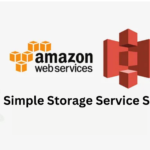In today’s data-driven world, businesses need systems that handle both transactional operations and analytical insights. This is where OLTP (Online Transaction Processing) and OLAP (Online Analytical Processing) systems come into play. These two types of systems serve distinct purposes and are optimized for different tasks. In this blog, we’ll explore their characteristics, key differences, and the trade-offs between data consistency and query performance.
What is OLTP?
OLTP systems are designed to manage transactional data efficiently. They are the backbone of business operations, handling everyday tasks like customer orders, payments, and inventory updates.
Key Characteristics of OLTP:
- Transactional Focus: Handles a high volume of short online transactions (e.g., CRUD operations: Create, Read, Update, Delete).
- Data Consistency: Prioritizes data integrity and accuracy using ACID (Atomicity, Consistency, Isolation, Durability) properties.
- Small Queries: Optimized for retrieving or modifying small subsets of data.
- Normalized Schema: Data is normalized to minimize redundancy and ensure efficient updates.
- Real-Time Processing: Supports real-time operations for smooth and fast business transactions.
Examples of OLTP Systems:
- Banking systems for handling deposits and withdrawals.
- Point-of-Sale (POS) systems for processing sales transactions.
- Inventory management systems for tracking stock levels.
What is OLAP?
OLAP systems are designed for complex analytical queries and reporting. They aggregate data from various sources to provide insights that aid in strategic decision-making.
Key Characteristics of OLAP:
- Analytical Focus: Designed for data analysis and business intelligence tasks.
- De-Normalized Schema: Data is often stored in star or snowflake schemas for faster query performance.
- Large Queries: Processes large volumes of data, often aggregating or summarizing it for insights.
- Data Redundancy: Sacrifices normalization to optimize query performance.
- Batch Processing: Data is typically updated in batches rather than real-time.
Examples of OLAP Systems:
- Sales analysis dashboards for identifying trends and patterns.
- Financial reporting systems for creating annual or quarterly reports.
- Customer segmentation tools for targeted marketing.
Key Differences Between OLTP and OLAP
| Feature | OLTP | OLAP |
|---|---|---|
| Purpose | Handles day-to-day transactions. | Supports decision-making and analysis. |
| Data Model | Normalized for efficiency. | De-normalized for fast querying. |
| Query Type | Simple, short queries. | Complex, long-running queries. |
| Focus | Data integrity and consistency. | Query performance and insights. |
| Data Volume | Smaller, focused datasets. | Large, aggregated datasets. |
| Updates | Real-time updates. | Periodic updates (e.g., nightly). |
| Users | Operational staff and end-users. | Data analysts and business executives. |
Data Consistency vs. Query Performance: The Trade-Off
- OLTP: Data Consistency
OLTP systems prioritize data consistency to ensure accuracy and reliability. For instance, in a banking application, every transaction must adhere to ACID properties to prevent data corruption. - OLAP: Query Performance
OLAP systems optimize for query performance, even if it means occasional data redundancy. By de-normalizing the schema and pre-aggregating data, OLAP systems allow users to extract insights quickly, even from massive datasets.
The Balance:
Organizations often use a combination of both systems. While OLTP ensures operational accuracy, OLAP focuses on deriving strategic insights from the data. Data warehouses and ETL processes act as the bridge, transferring data from OLTP systems to OLAP systems for analysis.
When to Use OLTP vs. OLAP?
- Choose OLTP when:
- You need to process a large number of transactions in real time.
- Data consistency and integrity are critical to your operations.
- Choose OLAP when:
- You need to analyze historical data for trends and patterns.
- Query performance and business intelligence are your priorities.
OLTP and OLAP systems are complementary technologies that cater to different needs. OLTP ensures smooth day-to-day operations with consistent data, while OLAP empowers businesses with actionable insights from complex analyses. By understanding their characteristics and differences, businesses can design robust data systems that support both operational efficiency and strategic growth.
Got questions about OLTP or OLAP systems? Share your thoughts in the comments below!


